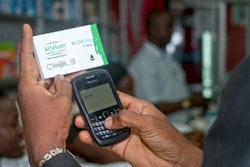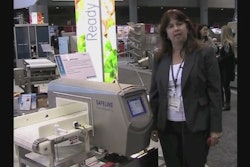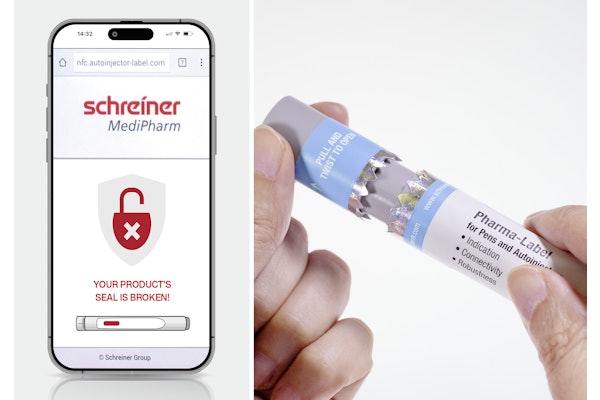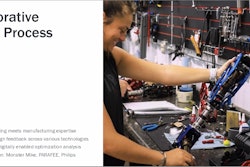“Let’s be honest,” says Wes Shepherd. “Industry will constantly be combating counterfeiting.”
Shepherd is CEO of Channel IQ (www.channeliq.com), a Chicago-based firm that monitors branded products and prices for manufacturers, distributors, and retailers so they can better understand their markets and their competition, and track possible gray market and counterfeit activities.
Channel IQ serves customers throughout the distribution chain in electronics, automotive, appliances, and other industries, but Shepherd points to growth in pharmaceutical industry channel monitoring. If the pharmaceutical sector is lagging other industries, he says it’s not due to lack of effort or interest, but a lack of technology to do the job. That’s where his company enters the picture.
“Packaging has a very important role,” he adds. “It has to signify the authenticity of a product, and not just hold the product or explain its benefits. There are some interesting technologies out there, such as holograms, but [counterfeiting is] going to keep escalating because pharmaceuticals represent an incredibly lucrative market. So packaging is great, but ultimately the industry will have to keep coming up with other technologies. The biggest problem I see is that packaging is no longer the key to ensuring product legitimacy for gray market and counterfeit concerns. With the Internet, people can represent a product as legitimate and there are few ways to guarantee its legitimacy.”
“Channel IQ can quickly examine the market and find legitimate and counterfeit activity. For example, we might look for drugs being sold below their cost in a given country when we know it’s difficult to get them below cost. In many cases, just finding drugs online is enough since the sale violates laws or distribution agreements. What might take somebody days or even months to get information about we can sometimes get within seconds. To use a medical analogy, we break down the online distribution world like a genome project. We break down the DNA of these sellers and products into a recognizable format for it to be actionable information where a customer can address the threat or even capitalize on an opportunity if one exists.”
GSK strategy
Some global pharmaceutical/biopharmaceutical firms provide online statements regarding their positions about counterfeiting. In its 2010 Corporate Responsibility Report, for example, GSK said its anti-counterfeiting strategy involves adding anti-counterfeiting features to its product packaging: “These include holograms, security seals, and complex background patterns that are difficult to photocopy or scan, as well as a wide variety of covert identifiers, which are added using print technologies and sophisticated markers. These help us to identify counterfeits and gather evidence against offenders.
“GSK works closely with the wider pharmaceutical industry to investigate cases of counterfeiting and we also raise awareness with governments internationally, pressing for stricter laws and more severe penalties. GSK is a founding member of the Pharmaceutical Security Institute [www.psi-inc.org], which coordinates information collection and investigations within the industry internationally, and helps to shape anti-counterfeiting policy among national governments and international organizations.”
Imported meds add ‘mystery,’ complexity
You don’t need sophisticated online software or technology to surf the Internet and read recent U.S. Food and Drug Administration warnings about fraudulent Tamiflu, and counterfeit Alli, Viagra, and Phentermine, to name a few. Internet searches reveal grim news concerning the cost of counterfeit pharmaceuticals in terms of lives, dollars, and lost jobs.
Packaging suppliers continue to develop innovative technologies to addressing pharmaceutical counterfeiting, four of which are included within this story.
Margaret Hamburg, M.D., FDA’s commissioner of Food and Drugs, described counterfeiting and diversion as “crimes of opportunity,” in remarks at the Partnership for Safe Medicines Interchange 2010.
She noted, “Drug counterfeiting, diversion, cargo theft, and economically motivated adulteration are crimes of opportunity, and the opportunity is flourishing because of the dramatic way our world has changed in a relatively short period of time. In the past decade or so, the pharmaceutical industry has shifted a large part of its manufacturing operations and supply sourcing overseas. Today, nearly 40 percent of the drugs Americans take are imported and nearly 80 percent of the active ingredients in the drugs on the American market come from overseas sources.
“So, in addition to the growth in volume of imports, there has been a dramatic increase in the variety and complexity of imported products. As a result, the supply chain—from raw material to finished product—has become more complex and mysterious involving a web of repackagers and distributors in a variety of locations. Like any chain, the drug supply chain is only as strong as its weakest link, and the proliferation of additional handlers, suppliers, and middlemen creates new entry points through which contaminated, adulterated, and counterfeit products can infiltrate the drug supply. And this, in my view, is simply unacceptable,” Hamburg noted.
“Counterfeits, diversions, and cargo theft are all part of a growing criminal enterprise, which also includes the deliberate adulteration of drugs and consumer products to maximize profits and unknown threats that have yet to surface. We have seen that the threat from economically motivated adulteration, counterfeiting, and cargo theft is real. And, unfortunately, we know that the results can be tragic.”
USP guidance to come
At the 9th Cold Chain & Temperature Management Global Forum (www.coldchainforum.com) in Philadelphia, Dr. Mary Foster, chair, packaging and storage expert committee with the U.S. Pharmacopeia (www.usp.org) and vp with Aphena Pharma Solutions (www.aphenapharma.com), noted that new guidance in USP’s General Chapter<1083> has “the ultimate goal to prevent adulterated and misbranded materials from entering the supply chain and to detect counterfeiting or diversion.”
Says USP: “As the pharmaceutical supply chain grows increasingly complex, and the risks to drug quality and safety correspondingly proliferate—new draft guidelines will be proposed [in] spring by the U.S. Pharmacopeial Convention to help ensure the integrity of the supply chain. A significant component of the guidelines, which will be contained in General Chapter <1083> of the USP-NF compendia, is best practices to combat counterfeit drug and medical devices.
“The chapter notes that combating counterfeit drugs and medical devices requires a combination of strategies that involve the cooperation of pharmaceutical or device manufacturers, supply-chain entities, regulatory authorities, law enforcement and patients. No single approach or party can be successful working in isolation.”
The chapter also covers good importation practices, diversion and theft, and natural disasters. The information will be published in the Pharmacopeial Forum, the vehicle through which USP accepts public comment on its standards, in March-April 2012. This is available free to all parties. USP expects the chapter to evolve significantly based on public feedback, and will further solicit input at a Supply Chain Integrity Workshop that the organization is convening May 22-23, 2012, at its headquarters in Rockville, MD.
4 Serialization team
Made up of suppliers Acsis (www.acsisinc.com), Cognex (www.cognex.com/trackandtrace), Nosco (www.nosco.com), and Omega Design (www.omegadesign.com), the 4 Serialization (www.4serialization.com) team was developed to provide a source for serialization and e-Pedigree solutions for pharmaceutical and life sciences organizations to provide a safe and secure supply chain to comply with government mandates and protect patients.
The team helps companies achieve compliance with the approaching e-Pedigree and serialization mandates, build a solution flexible enough to meet individual needs and to support changing mandates, work with serialization suppliers to meet serialization requirements while collecting the data necessary to build and benchmark ROI, engineer packaging with preserialized 2D and RFID solutions, and launch structured pilot programs and production scale-ups, and maximize results without affecting machine speeds and accuracy.
Global serialization activities
Serialization efforts are underway around the globe (see story, page 16). Countries in Africa offer a good example of this. In mid-October, telecommunication provider Orange Kenya launched mPedigree (www.mpedigree.net), an SMS-based system to fight counterfeit drugs in Kenya and Cameroon, where up to 30% of the drugs are reported as potentially affected. This system will be rolled out in different healthcare centers all over the country. Every drug serial number will have to be scanned through to ensure it is legitimate before it is administered to any patient.
Earlier this year, Systech International (www.systech-tips.com/pes.php) announced that with its Brazilian partner Videojet (www.videojet.com), one of the world’s largest pharmaceutical manufacturers would implement Systech’s Serialized Product Tracking (SPT) on each of its packaging lines in Brazil to meet that country’s pending anti-counterfeiting track-and-trace requirement, Law 11.903. The law, passed in 2009, requires the “tracking of manufacturing and consumption of medicine by means of data capturing, storing, and electronic transmission technology.”
SPT allocates and verifies unique identification numbers at the item level, packaging the item (child) into a higher-level package (the parent), establishing relevant parent-child relationship between item, case, and pallet, and maintaining data integrity throughout the packaging process, ensuring the manufacturer’s serialization and aggregation data are accurate.
In August, multilayered brand protection supplier Covectra (www.covectra.com) and Belfast, Ireland-based carton and label provider MSO Group (www.msocleland.com) announced a partnership to provide serialization for track-and-trace and diversion control, offering unit-level product identification through variable-data printing of 2D bar codes and human-readable codes.
These technologies aim to address Europe’s Falsified Medicines Directive that requires authenticity features on prescription drug packaging. “This newly developed directive by the European government is a first step in protecting consumers and saving pharmaceutical companies millions,” says Steve Wood, Covectra’s president. “The initiative will certainly put pressure on the U.S. government to continue to aggressively address what is now being referred to as an epidemic.”





















